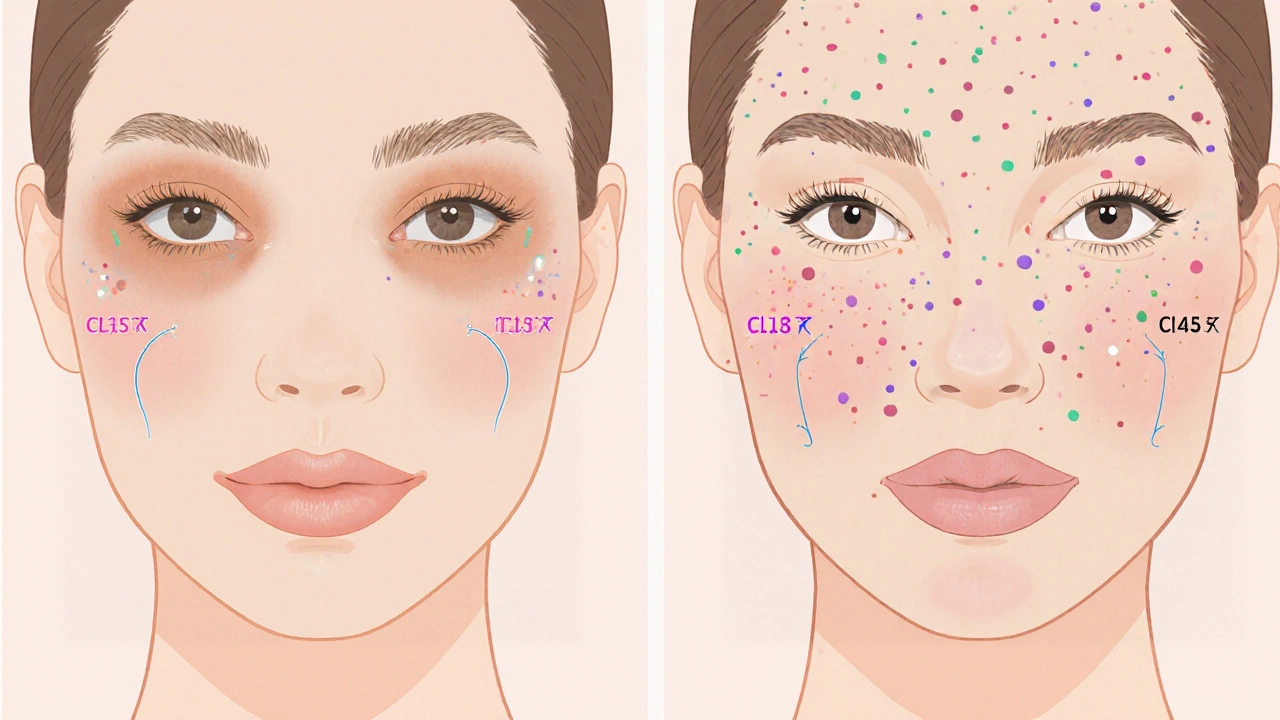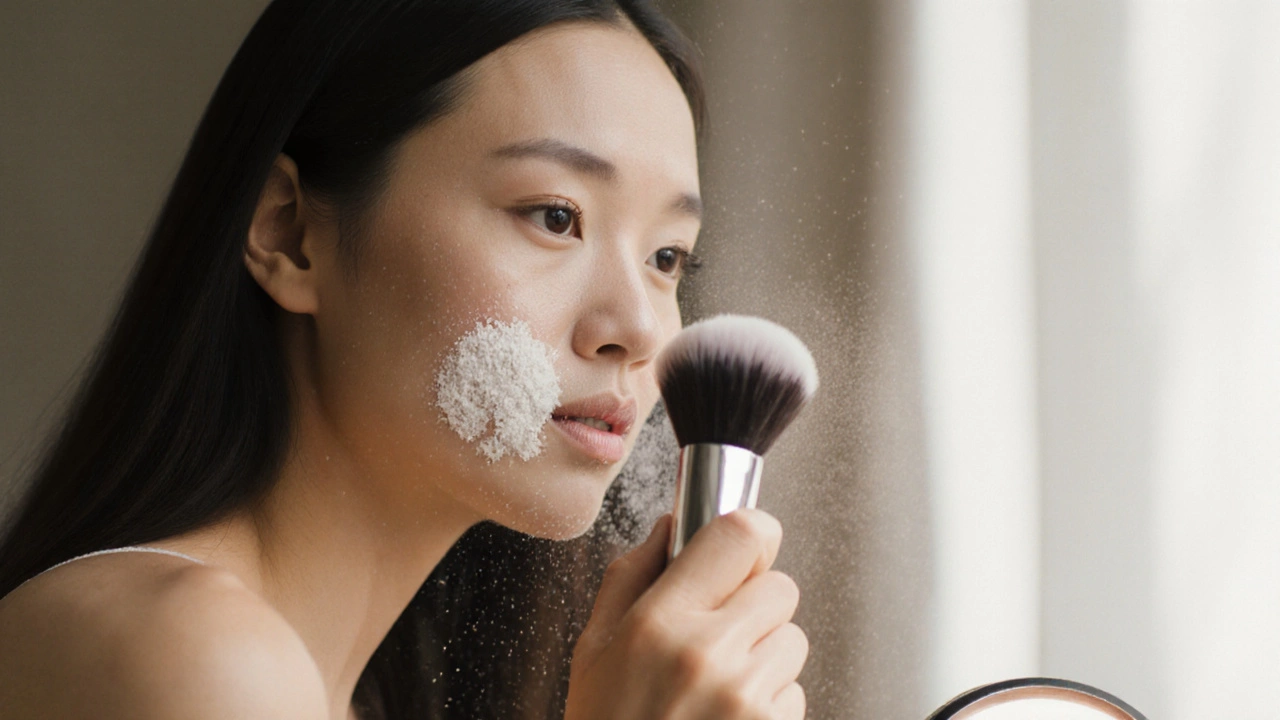Do You Put Concealer on First or Foundation? The Right Order for Flawless Skin
 Nov, 17 2025
Nov, 17 2025
Makeup Application Order Calculator
Get Your Personalized Application Order
Your Skin Type
Your Foundation Type
Your Main Concerns
Product Choices
Recommended Application Order
Ever spent 20 minutes blending concealer only to have it disappear under your foundation? Or worse-end up with cakey, patchy skin that looks like it’s been layered with plaster? You’re not alone. The debate over whether to apply concealer before or after foundation has been going on for years. And the truth? It’s not one-size-fits-all. But there’s a clear, practical way to get the best results based on your skin type, coverage needs, and the products you’re using.
Why the Order Matters
It’s not just about preference. The sequence you use affects how long your makeup lasts, how natural it looks, and whether you end up using too much product. Foundation is designed to even out your skin tone across your whole face. Concealer is meant to target specific problem areas-dark circles, redness, blemishes, or hyperpigmentation. If you put them on in the wrong order, you’re either wasting concealer or creating texture that catches light and looks unnatural.Think of it like painting a wall. You wouldn’t spot-paint a stain before rolling on the base coat. You’d cover the whole surface first, then fix what’s still visible. The same logic applies here.
When to Apply Concealer After Foundation
This is the most common and recommended method for most people, especially if you’re using liquid or cream foundation. Here’s why it works:- You use less concealer. Foundation often covers enough of your imperfections that you only need to touch up a few spots.
- It blends more easily. Foundation creates a smooth base, so concealer sits on top without sliding or pilling.
- It looks more natural. You avoid the heavy, mask-like effect that happens when concealer gets buried under thick foundation.
Here’s how to do it right:
- Start with a moisturized, primed face. Let your primer set for a minute.
- Apply foundation with a damp sponge or brush, building coverage where needed. Focus on even tone, not hiding everything.
- Wait 30 seconds-let the foundation set slightly. This prevents your concealer from mixing into it.
- Use a small concealer brush or your ring finger to dab concealer only where you need it: under eyes, around the nose, on blemishes.
- Lightly pat, don’t rub. Rubbing pulls the foundation underneath and creates streaks.
- Set with a light dusting of translucent powder. This locks everything in place.
Pro tip: If you have dry under-eyes, skip powder there. Use a hydrating concealer and let it sit without setting-it won’t crease if it’s not over heavy foundation.
When to Apply Concealer Before Foundation
There are two main situations where putting concealer on first makes sense:1. You Have Deep Dark Circles or Heavy Pigmentation
If your under-eye circles are a deep blue or brown, foundation alone won’t cover them. In this case, apply a color-correcting concealer first-peach or orange tones for dark circles, green for redness-then follow with foundation.Why? Because foundation is translucent. It blends, but it doesn’t neutralize. Color correctors do. Applying them before foundation lets the foundation sit on top of the correction, not over it.
Example: Someone with olive skin and dark under-eyes uses a peachy corrector, then a medium-coverage foundation. The result? Brighter, more even skin without looking like they’re wearing makeup.
2. You Use Powder Foundation
Powder foundations (like pressed or loose powders) don’t blend the way liquids do. If you apply them over concealer, they can settle into fine lines or lift the concealer off. So, apply concealer first, then lightly press powder foundation over it with a dense puff.This method works best for oily skin types who need matte finish and minimal product. It’s also popular among those who do “skin tints” or minimal makeup.

What Happens If You Do It Wrong?
Putting foundation over concealer when you have deep imperfections? You’ll need to layer more concealer on top, which leads to caking. The result? A visible line where your concealer meets your foundation, especially under the eyes.Putting concealer over thick foundation? You’re fighting texture. The foundation may have settled into pores or fine lines, and the concealer can’t glide smoothly over it. It looks patchy, chalky, or like it’s floating on top.
Both mistakes lead to the same problem: you’re using more product than needed, and your skin looks less like skin and more like a mask.
Product Matters More Than You Think
Not all concealers and foundations behave the same. The formula you choose changes everything.- Hydrating, dewy concealers (like NARS Radiant Creamy Concealer) work best applied after foundation. They blend seamlessly into a smooth base.
- Full-coverage, matte concealers (like Estée Lauder Double Wear Concealer) can be applied first if you need serious correction, but only if your foundation is lightweight or powder-based.
- Thin, watery foundations (like Glossier Perfecting Skin Tint) won’t cover much. You’ll likely need concealer underneath to get any real coverage.
- Thick, full-coverage foundations (like Fenty Pro Filt’r) often make extra concealer unnecessary unless you have severe discoloration.
Always test your combo on your jawline. Apply foundation, then concealer on top. Then reverse it. Which looks more natural? Which lasts longer after an hour? That’s your answer.

Pro Tips for Every Skin Type
Dry Skin
Skip powder under the eyes. Use a hydrating primer, then a creamy concealer after foundation. Let it sit for a minute, then gently pat with your finger. Avoid dragging the product.Oily Skin
Apply concealer first only if you’re using powder foundation. Otherwise, go foundation first, then concealer, then set with a translucent powder. Use blotting papers midday instead of reapplying concealer.Acne-Prone Skin
Don’t cover every blemish. Use a green color corrector on red spots, then apply a thin layer of foundation. Spot-conceal only the most noticeable ones after. Too much product clogs pores and makes breakouts worse.Mature Skin
Avoid heavy concealer under the eyes. Use a lightweight, luminous formula after foundation. Skip powder in fine line areas. A dab of hydrating serum under the concealer helps it glide without settling.The Bottom Line
Most people should apply foundation first, then concealer. It’s simpler, uses less product, and gives a more natural finish. But if you have deep shadows, strong discoloration, or use powder foundation, putting concealer down first is the better move.The key isn’t following a rule-it’s understanding what your skin needs and choosing the sequence that makes your makeup work for you, not against you. Try both methods for a week. Take photos in natural light. See which one lasts longer, looks more seamless, and makes you feel more confident. That’s your perfect routine.
Can I use concealer without foundation?
Yes, absolutely. Many people use concealer alone for a natural, no-makeup look. Just make sure your skin is prepped with moisturizer and primer. Apply concealer only where needed-under eyes, red spots, or uneven areas-and blend well. It works best with lightweight, hydrating formulas.
Why does my concealer look cakey?
Cakey concealer usually happens when you apply too much, use the wrong formula for your skin type, or layer it over thick foundation. It can also occur if you don’t let your moisturizer or primer fully absorb before applying makeup. Try using less product, patting instead of rubbing, and setting with minimal powder.
Should I set concealer with powder?
Only if you have oily skin or need long wear. For dry or mature skin, skip powder under the eyes-it settles into fine lines. If you do set it, use a light dusting with a fluffy brush. Pressing with a sponge can remove too much product and make it look flat.
Is color correcting necessary?
Only if you have noticeable discoloration-like dark blue under-eyes, red acne, or yellowish sallowness. Color correctors neutralize these tones so your concealer doesn’t have to work as hard. You don’t need them if your foundation covers your imperfections well. A peach corrector under the eyes is the most common use.
What’s the best tool for applying concealer?
Your ring finger is ideal for most people. It’s the gentlest finger and naturally warms the product, helping it blend into the skin. Use a small brush for precision on blemishes or a damp sponge for blending under the eyes. Avoid dense, flat brushes-they can drag and pull the product.
What to Try Next
Once you’ve nailed your concealer-and-foundation order, experiment with these next steps:- Try a cream blush applied after foundation but before powder-it gives a natural flush.
- Use a setting spray instead of powder for a dewy finish.
- Test a tinted moisturizer with built-in SPF to see if you even need foundation at all.
The goal isn’t perfection-it’s skin that looks like skin, just better. And that starts with knowing when to layer, when to skip, and when to let your skin breathe.
